
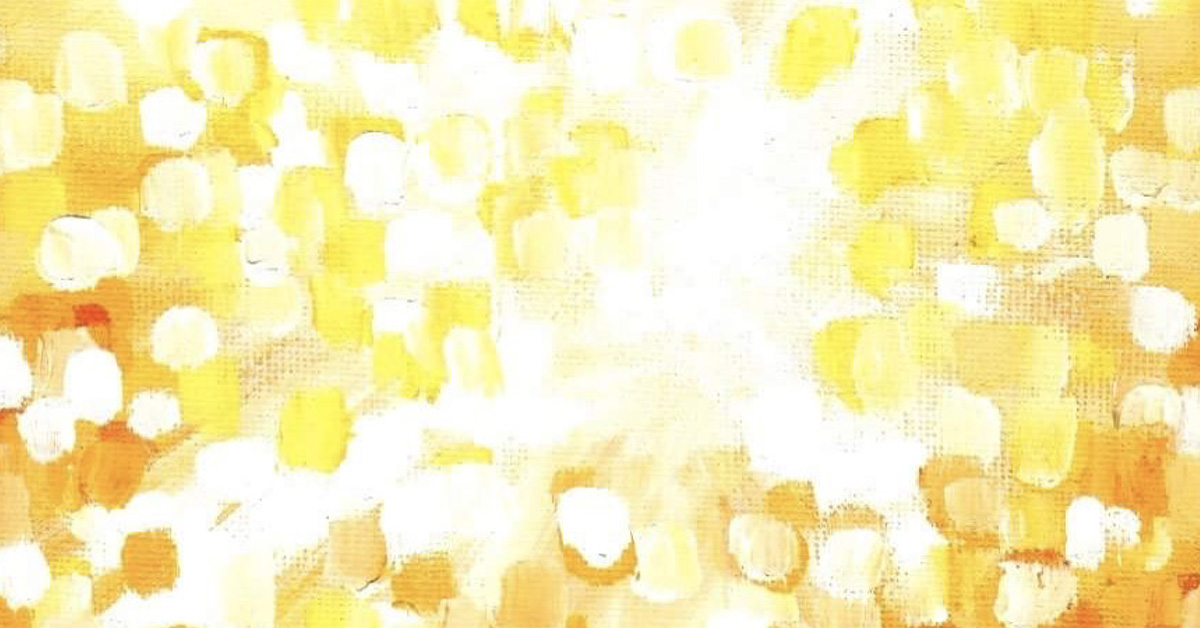
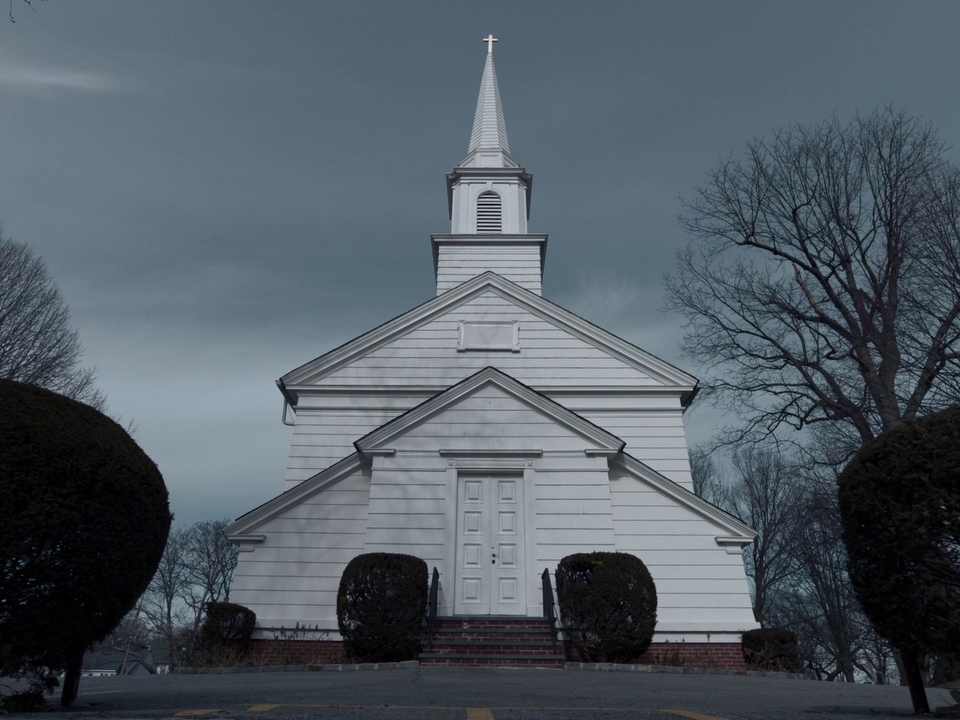
The film opens with a dark screen, amidst palpable silence. As minimal intro credits come and go, a small light begins to wax top-centre. The broader image unfurls unadorned, revealing a white cross atop a picturesque, old church building, reflecting the sunlight. The camera slowly tracks up the drive. There are no cuts, no embellishments, just the image growing in frame over a long, patient take. The framing of the film is square, 1.37:1 or Academy ratio to be precise, rather than the expansive wide-screen most modern viewers are used to. This square framing at once forces me to carefully attend to what is right in front of me, while creating a sense of “boxed-in-ness.” The building is historic, beautiful. And yet I am left with a sense of unease I can’t quite place.
I first experienced First Reformed in a small London cinema a few years ago.
It has wonderfully haunted me ever since.
Written and directed by Paul Schrader, the film centres around Ethan Hawke’s Reverend Ernst Toller, the ailing minister of an historic Dutch Reformed church in upstate New York, who is suffering what St John of The Cross calls “the dark night of the soul.” Hawke’s performance is a career best, alongside a small and excellent supporting cast, and Schrader’s script is spellbinding in its piercing economy.
Even at a cursory glance one might immediately assume that the movie deals with spiritual and religious ideas. And indeed, much of the film’s content resonates with some of the contours of the spiritual life: endurance amidst suffering, wrestling in prayer, silence, stillness, the slow attending to everyday things, unease that longs for resolution and, just maybe, the breaking in of the Transcendent Other when we least expect it.
This is certainly true for the film’s plot, dialogue and onscreen action, and yet there is something unspoken, something intrinsic that goes much deeper than the surface content.
You see, as I was later to learn, I was being introduced through First Reformed to a type of cinema called Transcendental Style or “spiritual cinema,” which is extensively explored by Paul Schrader in his seminal 1972 work, Transcendental Style in Film. For Schrader and the masters of Transcendental Style upon whom he draws — Yasujiro Ozu, Robert Bresson and Carl Dreyer — spiritual cinema, like the spiritual life itself, is “experiential, not expositional.” This conviction is manifest in the defining characteristic of the Transcendental Style: a prioritising of form over content as the vehicle driving the film. Rather than through overt dialogue, plot or action, it employs a set of film-making techniques and leverages certain style choices and aesthetics to evoke (invoke?) the experience of the spiritual life.
Schrader himself, in his definitive study, lays out some of the techniques used in Transcendental Style: long takes, wide angles, static frames, “boxed” screen ratio, very little to no composed music, minimal camera angle coverage, offset edits, diegetic sound effects, repeated composition, and others. These techniques create space, through time and subverted expectation, for the spiritual: for stillness, silence and contemplation, while at the same time building tension — creating “a sense of unease the viewer must resolve.”
Every one of these stylistics is employed throughout First Reformed to profound effect.
Long takes slow us down, forcing us to almost indwell and attend carefully to what is occurring on screen. Schroder comments that Robert Bresson, one of the fathers of Transcendental Style, in his work, “made ‘waiting’ a verb,” and that as a style it is “a mile marker on the journey toward stillness.”
Where we would expect a composed soundtrack to be used to direct our empathy and move the plot forward, this is almost entirely missing, with the focus instead on everyday sounds like dogs barking, cars driving by, someone sneezing, footsteps, the chirping of birds, dripping water. This close attention to the everyday, a “celebration of the trivial,” grounds us in the moment allowing the ordinary to open into a space inhabiting more than simply the material.
Unlike most Hollywood films which edit for pacing and tend to anticipate and fulfil the expectations of the viewer, here effective use is made of offset edits, leaving a scene unresolved in the mind of the viewer, the cut coming too soon or long after the action onscreen is over. Our expectations are again subverted and we are forced to sit with the mysterious and awkward.
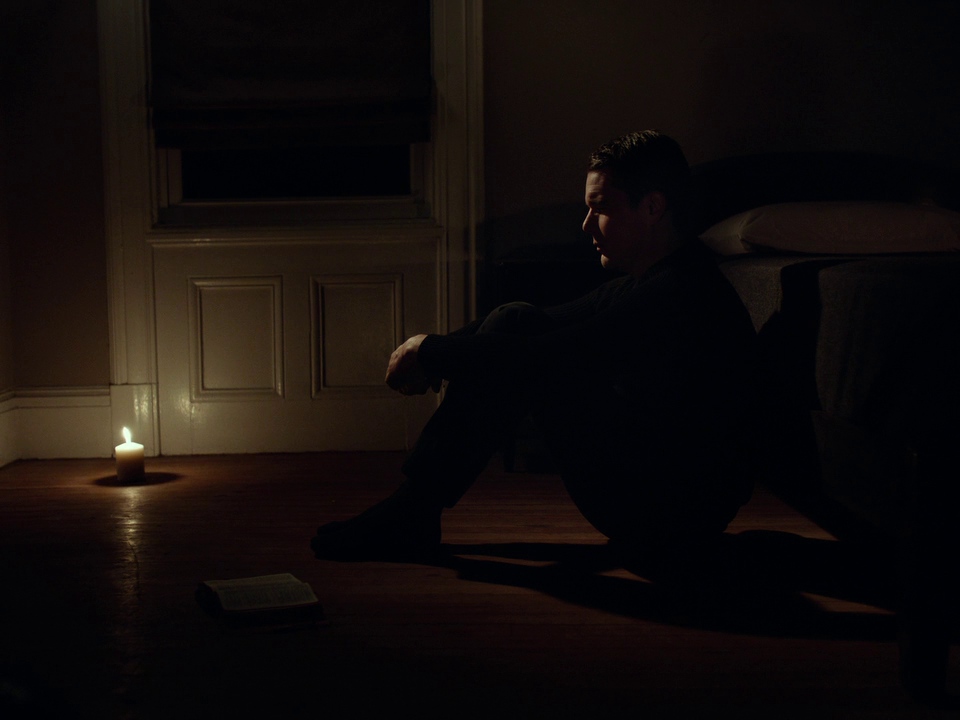
Forgoing multiple camera angles and aggressive camera movement, it opts instead for a static frame, causing the viewer to have to explore the frame undirected, being more fully exposed to the potential for varied meaning and mystery.
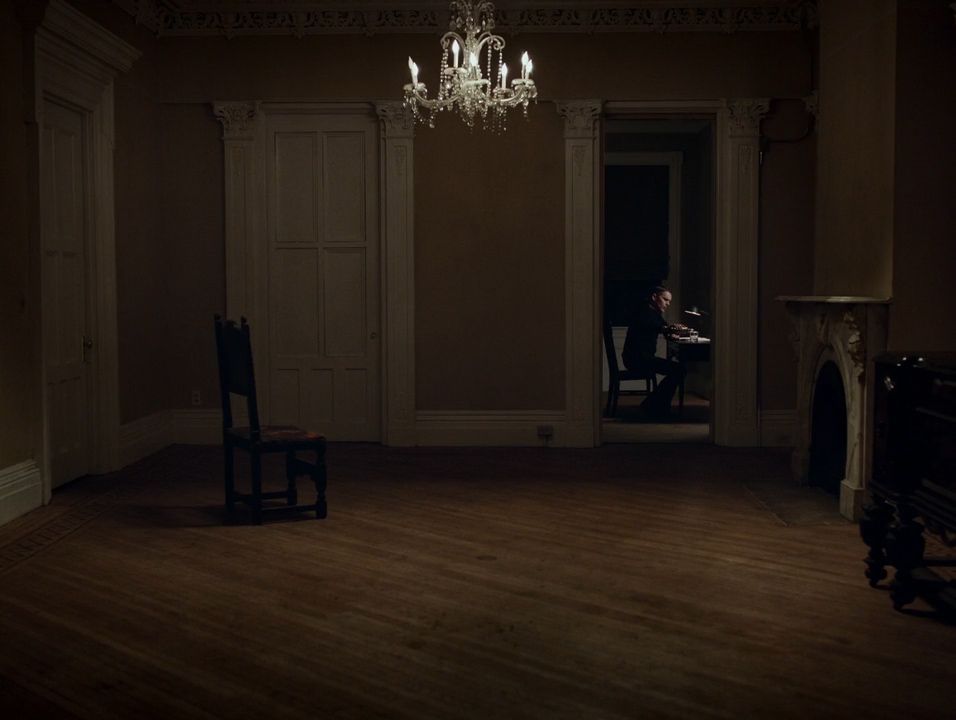
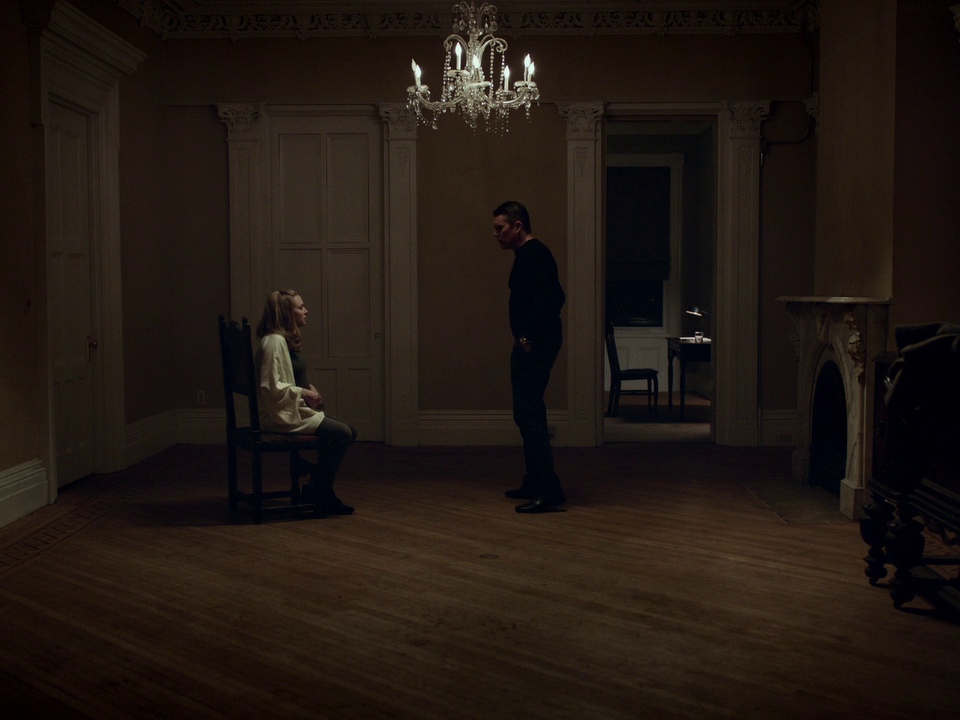
This is then taken one step further as certain static frames are revisited in multiple scenes with minimal adjustments to the mis-en-scène. The two frames above are captured with a static camera. In the first, unaided by any camera movement, the viewer’s gaze is made to roam the frame feeling its austere emptiness even as the vacant chair makes room for the possibility of presence. In the second frame the staging remains the same but is now inhabited by the presence of Amanda Seyrfried’s Mary. And it is this same still frame which later becomes the place in which Toller has his transcendent experience.
Over the first two acts of the film its visual and auditory language goes to work on us, slowing us down, getting us accustomed to silence and stillness, drawing our focus to the ordinary, forcing us to sit with the awkward, subverting our expectations and creating a subcutaneous dissonance that needs rectification.
Enter the climactic component of Transcendental Style. In a cinematic act that breaks every convention established up to this point in First Reformed, the alien movement of the camera, the use of composed music and the changing visuals jolt the viewer into an awareness that this is something other. Schrader describes it as “a Decisive Moment, an unexpected image or act, which then results in a stasis, an acceptance of parallel reality — transcendence.” The moment is represented as deeply intimate and utterly alien in the construction of the film expressly because it is an attempt to point to the experience of something Wholly Other.
To be sure, First Reformed in particular and spiritual cinema in general are not trying to provide us with an orthodox presentation of the Christian spiritual life. Nor are they laying before us a blueprint or how-to guide for navigating the experience of the Transcendent.
What the Transcendental Style attempts to do is to create space for the spiritual amidst the everyday material, even the painful and profane, via the elements of its form. This is precisely what First Reformed does to the viewer. Employing all the technical tools in its toolbox, the film refuses to relegate us to the role of “detached (or entertained!) observer,” and instead draws us along as participants in its unfolding. In the end it provides for us a glimpse into what film critic Josh Larsen describes as “a confession of faith not as faith is often demanded, but as it is experienced… a way of living in mystery, of staring straight into that fixed, unblinking camera, while holding tightly onto whatever hope we have.”
For further viewing:
Diary of a Country Priest, Robert Bresson.
Ordet, Carl Dreyer.
Tokyo Story, Yasujiro Ozu.
Winter Light, Ingmar Bergman.
For further reading:
Transcendental Style in Film, Paul Schrader.
Notes on the Cinematograph, Robert Bresson.
Movies are Prayers, Josh Larsen.